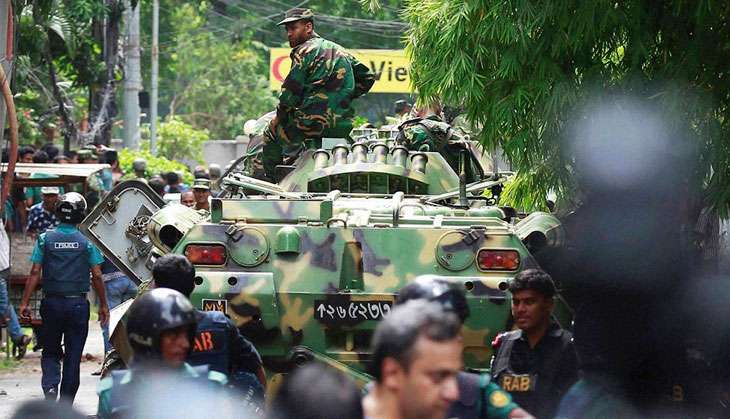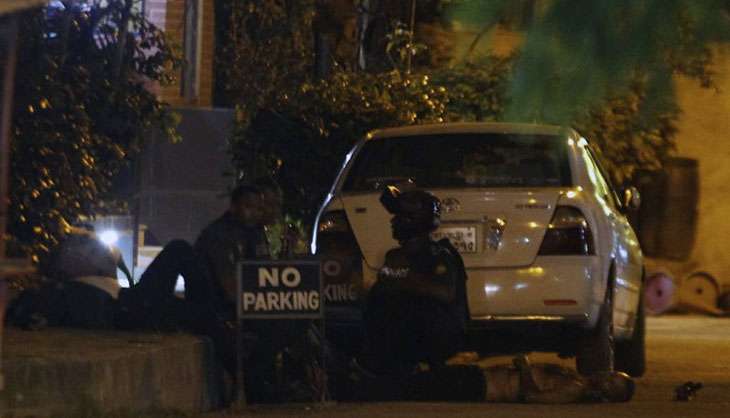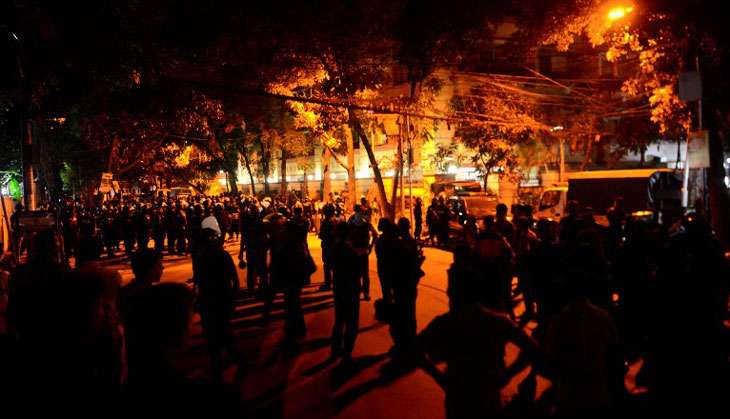Nightmare in Dhaka: how the terror attack unfolded and what was behind it

- Seven terrorists attacked the Holey Artisan bakery in Dhaka\'s sensitive Gulshan 2 neighbourhood on Friday evening
- The army finally ended the 11-hour hostage crisis on Saturday morning with six terrorists killed and one captured
- The victims included seven Japanese nationals, an Indian, an American, and others who hailed from Italy and South Korea
- According to survivors, the terrorists segregated foreigners and locals, and let go those who could recite the Quran
- The spiralling terror crisis in Bangladesh and what\'s behind it
- What the Opposition BNP had to say about the attack
The 11-hour siege at the Holey Artisan bakery in Dhaka left 20 people dead, a Bangladesh army spokesperson confirmed on Saturday afternoon.
The ghastly attack, in the sensitive Gulshan 2 neighbourhood, which houses all the important diplomatic establishments in the country, mostly targeted foreigners.

The attack comes after the Bangladeshi government's drive against extremists, in which more than 15,000 people have been arrested so far.
Before the armoured personnel carriers of the Bangladesh Army could breach the walls of the restaurant, paving the way for more than 100 commandoes to enter the premises, the group of terrorists, said to be seven in number, had already killed 20 people. They were brutally hacked with swords.
"Most of them had been brutally hacked to death with sharp weapons," army spokesman Brigadier General Nayeem Ashfaq Chowdhury told reporters.
Hasina's call
The attack came on the last Friday of Ramzan, as the country readied for the Eid holidays. Bangladesh Prime Minister Sheikh Hasina, while condemning the attack, announced a two-day mourning.
"What kind of Muslims are these who are killing other humans in Ramzan?" she said on Saturday.
"I want to ask those who are aiding terror, what do you get by taking innocent lives? Islam is a religion of peace, you are maligning its name," Hasina said later in the day, in a second televised address to the nation.
"People must resist these terrorists. My government is determined to root out terrorism and militancy from Bangladesh," she reiterated, as messages of solidarity poured in.
Indian Prime Minister Narendra Modi condemned the attack in a phone call to his Bangladeshi counterpart.
Who were the victims?

The victims, according to sources in Dhaka, include seven Japanese who were associated with JICA, reportedly involved in a traffic decongestion project in the country.
Others include Italians, South Koreans, an American and an Indian girl, Tarushi Jain, a 19-year-old student of UC Berkeley, who was in Dhaka visiting her family in the summer vacations.
A couple of locals are also said to be among the dead, including Ishrat Akhond, the former head of a Dhaka art gallery, according to BDnews24.com.
Wider repercussions

The upmarket Holey Artisan bakery, overlooking the Gulshan lake, had opened just a couple of years ago. Soon, it became a popular spot for the expatriate community in the Bangladeshi capital. Most of the members of the expatriate community live in the diplomatic neighbourhood, since it is considered safer than other places.
Analysts say the attack is bound to have wider repurcussions for Bangladesh. The Japanese Prime Minister has already dispatched the deputy foreign minister to Dhaka, and is said to be setting up a joint task force.
Other embassies are considering a leaner presence in the crisis-ridden country. "Security protocols will certainly be revised. Dhaka has never seen something like this before," a strategic analyst in Dhaka said.
ISIS or Al Qaeda?
An ISIS-associated website took responsibility of the attack. The SITE Intelligence Group says the ISIS website has published photos of the attackers claiming responsibility. This is unprecedented, since earlier when ISIS claimed responsibility for attacks, it did not publish any photos.
However, the strategic community believes it could be the handiwork of the Ansar ul Islam, the Al Qaeda in South Asia-affiliated outfit.
"We are not surprised. This is something that the strategic community in Dhaka had been expecting," a strategic analyst based in Dhaka said.
"More than a month ago, the sleuths had arrested a member of the Ansar ul Islam who, in his interrogation, had claimed that a spectacular strike was in the offing."
Intelligence reports leaked to the press recently had also pointed out the possibility of a terror strike in July, the analyst said.
Interestingly, this attack is also a departure from the earlier tactics of Islamist radicals, who usually resort to hit-and-run tactics.
"We did not expect this sort of hostage situation," the analyst explained.
Al Qaeda has a history of attacking foreigners, as seen in ghastly attacks in the past, including the ones in Bali, Indonesia, and Kenya.
Reminiscent of 26/11
The attackers, it is said, were well-dressed and could converse in English, according to sources in Dhaka. Six of them were killed in the early morning military operation, christened 'Operation Thunderbolt', which lasted less than 20 minutes, while the commandos managed to capture one alive.
The captured terrorist, according to sources in Dhaka, is a 17-year-old student at the privately owned Manarat University, an institution known for its radical Islamist leanings. The university has a campus in Gulshan.
Interestingly, the attacker's tactics have a striking similarity to the Lashkar-e-Taiba terrorists who attacked Mumbai on 26 November 2008.
Survivor accounts detail how the attackers segregated the foreigners and the locals. The ones who could recite the Quran were spared, it is learnt.
The Dhaka Tribune reported how chants of Allah hu Akbar were heard from the restaurant after the attack began on Friday evening. An Indian doctor, Satyapal, too, escaped death as he could speak Bengali. He was one of the 13 people who were rescued on Saturday morning.
The crisis in Bangladesh
The attack in the Gulshan neighbourhood is in line with the ongoing crisis in Bangladesh. While a Hindu priest was brutally killed on Friday, another one was attacked in Satkhira Upzilla, even as the security forces tried to end the hostage crisis in the capital.
Bangladesh has witnessed a spate of targeted killings, which have left more than 50 people dead in the last three years.
While the Jamat-ul-Mujahideen Bangladesh, an ISIS-associated outfit, is said to be behind the killings of religious minorities, including Hindu priests, Christians and Shias, the Al Qaeda-affiliated Ansar ul Islam has targeted bloggers, LGBT activists, university professors etc.
The attacks have intensified after the Shahbagh movement, which led to the formation of a radical group called the Hefazat-e-Islam. Many activists of the Shibir, the Jamaat-e-Islami's (JEI) students wing, had joined this outfit.
JEI, which was banned by the government from contesting elections, had aligned with the Opposition Bangladeshi Nationalist Party in the last polls. The BNP, after the ban on its ally, had boycotted the elections, paving way for Hasina's Awami League to win unopposed on most seats.
In denial?
Interestingly, even as analysts point to a possible competition between the ISIS and the Al Qaeda in perpetrating violence in the country, the Bangladeshi government has been denying the presence of ISIS in the country. It had blamed the attacks on locally-grown outfits, especially those associated with the JEI.
Many senior figures of the JEI have been executed for siding with the Pakistanis in the 1971 war of liberation. Others continue to face trial in the War Crimes Tribunal. The home minister had gone a step further and blamed Israel for the attacks, which the latter had rubbished as 'utter drivel'.
"It is baffling how the government is not ready to accept the presence of ISIS in the country," the Dhaka-based editor of a daily told Catch.
"I do not see any reason why they should be doing this," he said, while adding how the government's drive to catch extremists was mostly targeted towards petty criminals and political opponents. "There are less than a hundred people with links to terror outfits who have been arrested."
Opposition's claims
The BNP, too, had criticised the government's drive against extremists, claiming that it was aimed at political opponents, rather than extremists.
"There is a democracy deficit in the country, and even then, the government is trying to hide behind the claim that the Opposition is behind these attacks," said a former BNP minister.
He said the focus of the security agencies was not on countering terror, but on extorting money and targeting political opponents of the ruling Awami League.
"If the government continues to be in denial of the presence of ISIS, and keeps blaming the Opposition, such attacks will only increase," the former minister said, while pointing out that the target of the latest attack is one of the most sensitive places in the Bangladeshi capital.
"If such targeted killings continue, Bangladesh, in future, will be a very different story," he said.
Edited by Shreyas Sharma
More in Catch
Dhaka live: 20 people were slaughtered long before joint operation began
Here's why the Dhaka restaurant attack is ringing alarm bells for Bangladesh
Dhaka attack: What kind of Muslims kill during Ramzan, asks Bangladesh PM Sheikh Hasina
First published: 2 July 2016, 10:31 IST





![BJP's Kapil Mishra recreates Shankar Mahadevan’s ‘Breathless’ song to highlight Delhi pollution [WATCH] BJP's Kapil Mishra recreates Shankar Mahadevan’s ‘Breathless’ song to highlight Delhi pollution [WATCH]](https://images.catchnews.com/upload/2022/11/03/kapil-mishra_240884_300x172.png)

![Anupam Kher shares pictures of his toned body on 67th birthday [MUST SEE] Anupam Kher shares pictures of his toned body on 67th birthday [MUST SEE]](https://images.catchnews.com/upload/2022/03/07/Anupam_kher_231145_300x172.jpg)






